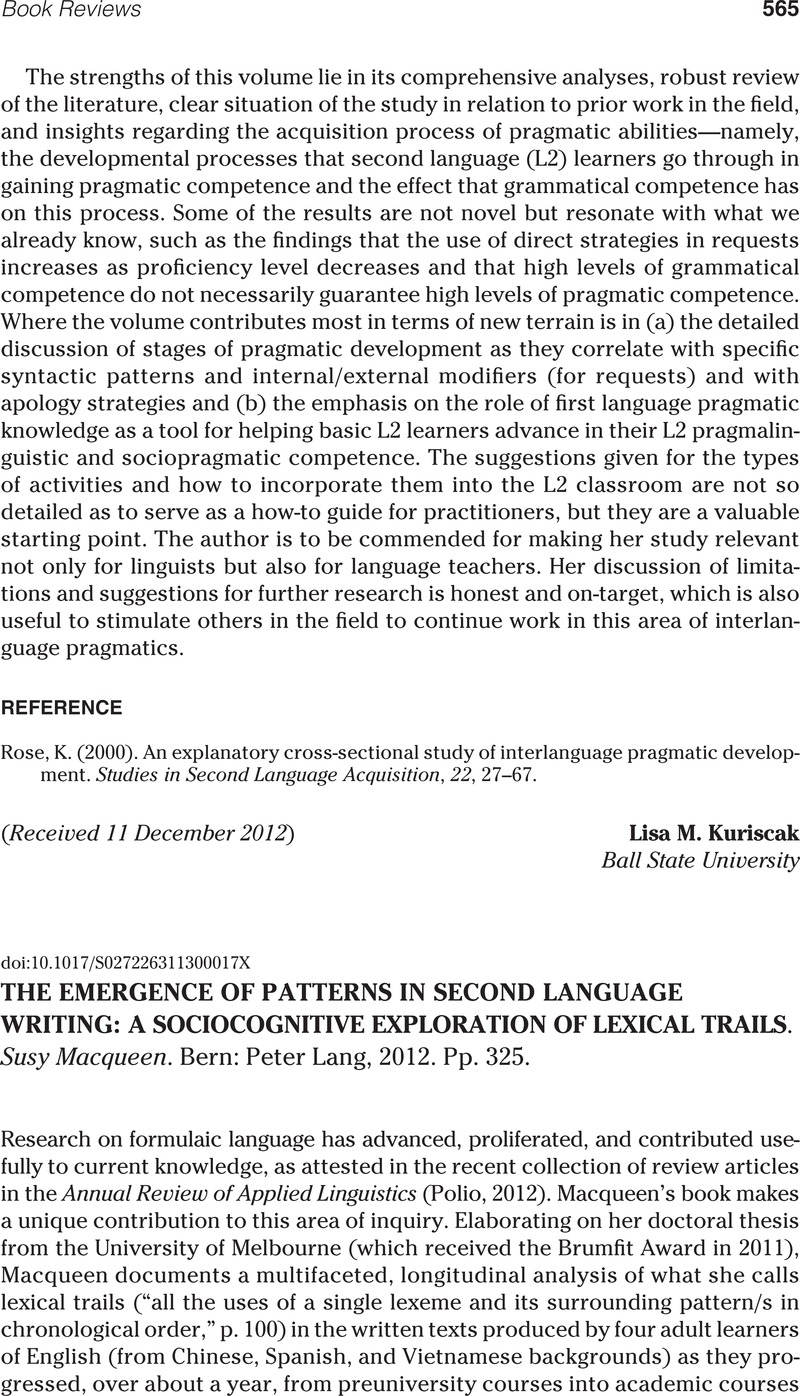No CrossRef data available.
Article contents
THE EMERGENCE OF PATTERNS IN SECOND LANGUAGE WRITING: A SOCIOCOGNITIVE EXPLORATION OF LEXICAL TRAILS. Susy Macqueen. Bern: Peter Lang,2012. Pp. 325.
Published online by Cambridge University Press: 28 August 2013
Abstract
An abstract is not available for this content so a preview has been provided. Please use the Get access link above for information on how to access this content.

- Type
- Book Reviews
- Information
- Copyright
- Copyright © Cambridge University Press 2013
References
REFERENCES
Aljaafreh, A., & Lantolf, J. (1994). Negative feedback as regulation and second language learning in the zone of proximal development. Modern Language Journal, 78, 465–483.CrossRefGoogle Scholar
Hoey, M. (2005). Lexical priming: A new theory of words and language. London: Routledge.Google Scholar
Li, J., & Schmitt, N. (2009). The acquisition of lexical phrases in academic writing: A longitudinal case study. Journal of Second Language Writing, 18, 85–102.CrossRefGoogle Scholar
Poehner, M., & Lantolf, J. (2005). Dynamic assessment in the language classroom. Language Teaching Research, 9, 233–265.CrossRefGoogle Scholar
Polio, C. (Ed.) (2012). Topics in formulaic language: Annual Review of Applied Linguistics, 32.Google Scholar




